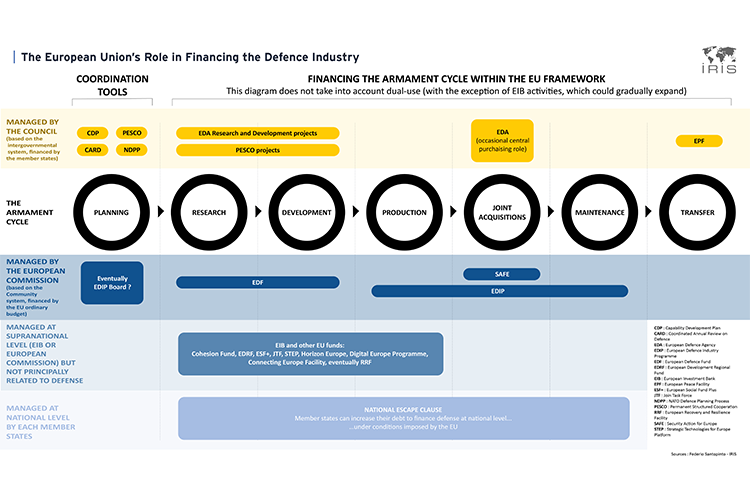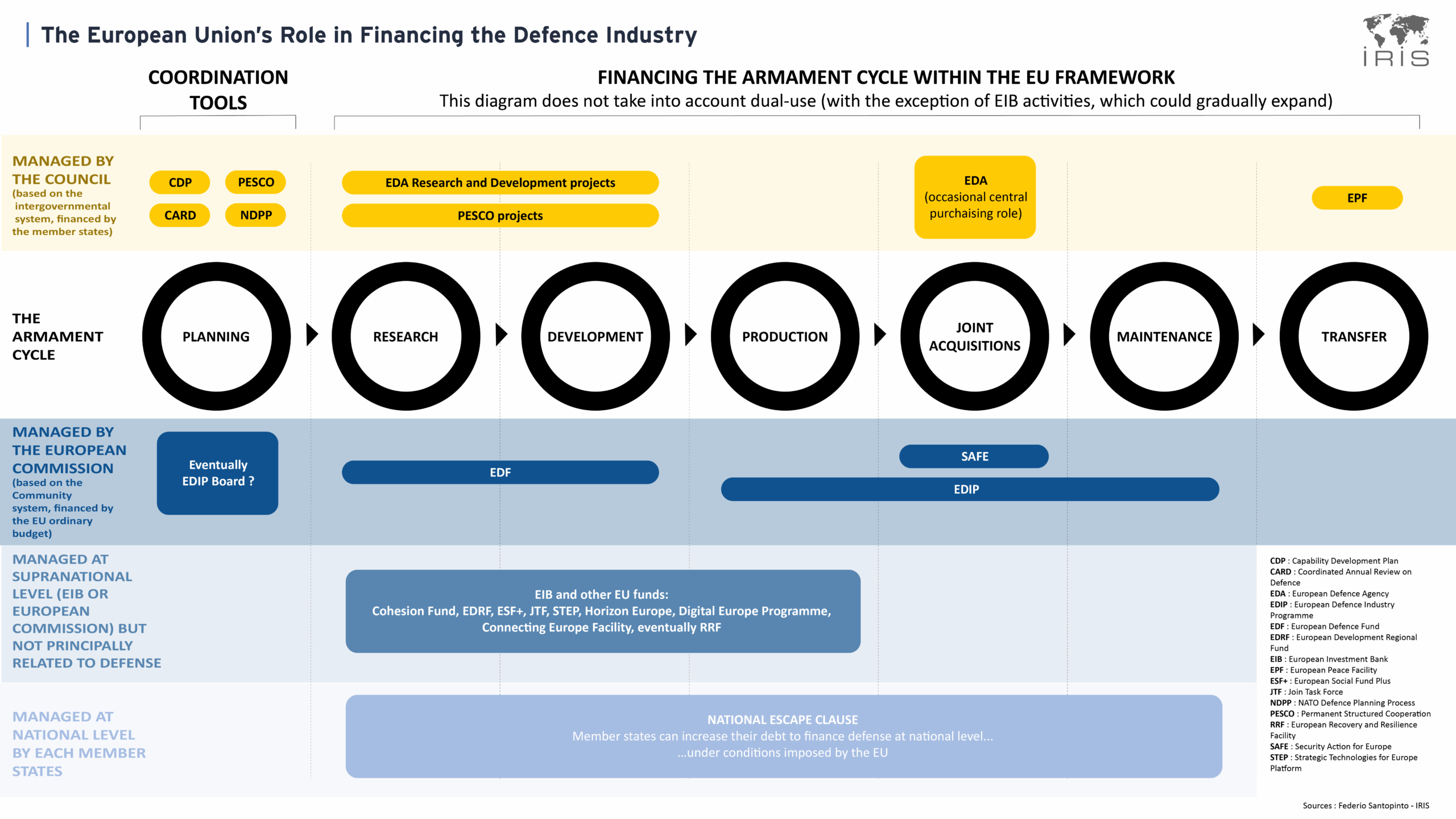Infographies / Europe, European Union, NATO
7 October 2025
The European Union’s Role in Financing the Defence Industry

Since the European Union (EU) launched its first small pilot project to support the defence industry in 2014, much has changed. At the time, the initiative, managed by the European Defence Agency (EDA), passed almost unnoticed. Its derisory budget (€1,5 million) prompted little more than a few shrugs from defence specialists.
In 2014, however, those specialists still knew little about the EU. They were not used to working with it. Many had never heard of the ‘spill-over’ mechanism that drives European integration. They had not grasped that the pilot project just adopted had opened slightly a door—one that was destined, little by little, to be fully opened.
The year 2014 thus marks a turning point. Before that date, the idea that the Union’s ordinary budget could finance the defence industry was unthinkable. The sector was considered too “sovereign” for the EU to get involved in. After 2014, the taboo was broken and, crisis after crisis, the unthinkable became not only possible but also desirable.
Today, military-affairs specialists have learned to understand the EU—and with good reason: the Union has become a fully-fledged actor in the armaments industry and its financing, an actor that can no longer be ignored. That said, the Union remains complex and difficult to understand. Its institutional and administrative architecture is so convoluted that its action is at times hard to read and, in some cases, even erratic.
EU defence industrial policies are no exception. In recent months and years, initiatives, programmes and proposals to finance European defence have poured in from all sides, at times fuelling a degree of confusion, and even tensions.


